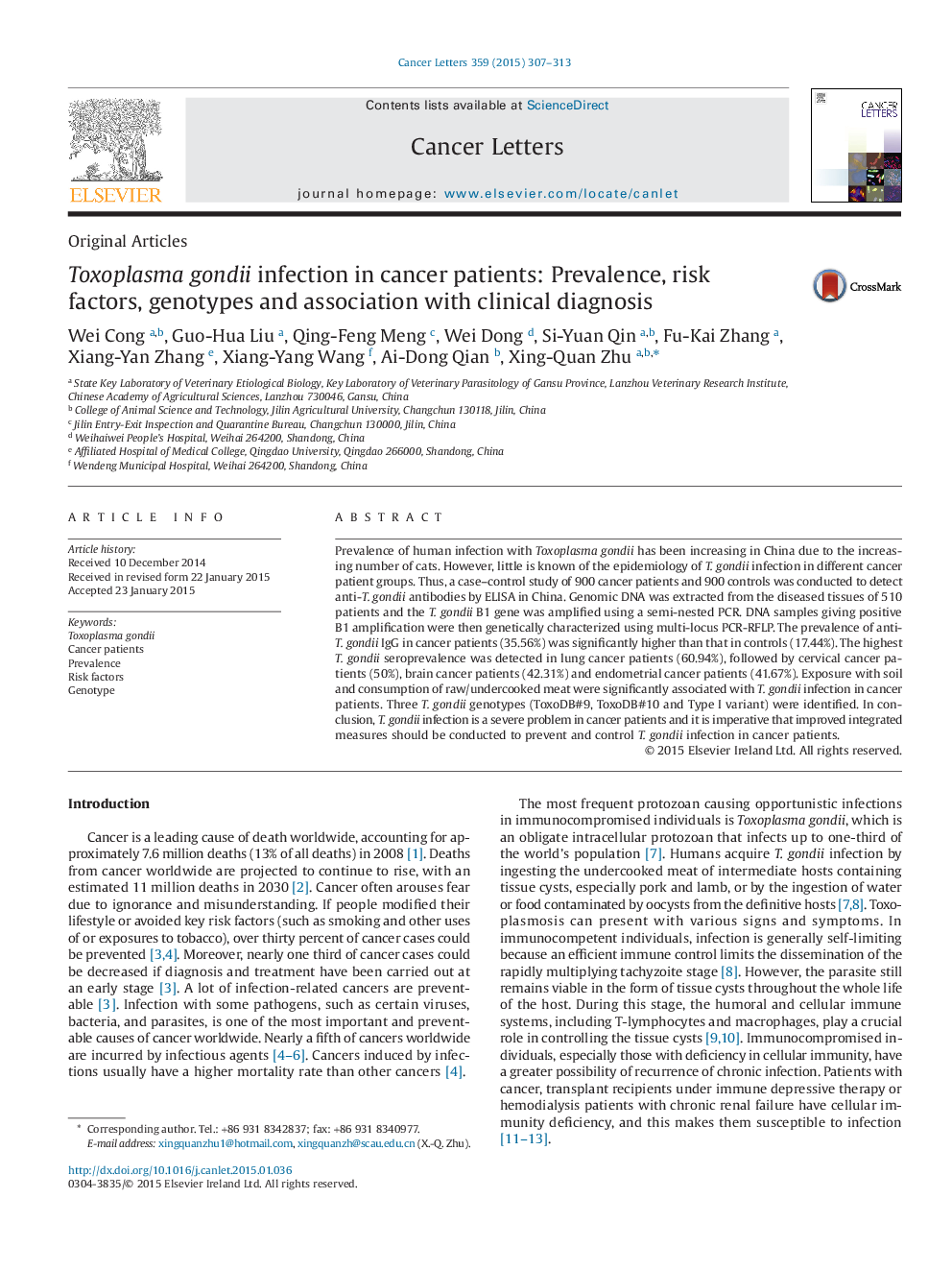| کد مقاله | کد نشریه | سال انتشار | مقاله انگلیسی | نسخه تمام متن |
|---|---|---|---|---|
| 2112526 | 1084392 | 2015 | 7 صفحه PDF | دانلود رایگان |
• The prevalence of anti-T. gonii IgG in cancer patients (35.56%) was significantly higher than that in controls (17.44%).
• Lung cancer patients had the highest T. gondii seroprevalence (60.94%), followed by cervical cancer patients (50%).
• Exposure with soil and consumption of raw/undercooked meat were associated with T. gondii infection in cancer patients.
• Three genotypes (ToxoDB#9, ToxoDB#10 and Type I variant) were identified, type I strains being prevalent.
Prevalence of human infection with Toxoplasma gondii has been increasing in China due to the increasing number of cats. However, little is known of the epidemiology of T. gondii infection in different cancer patient groups. Thus, a case–control study of 900 cancer patients and 900 controls was conducted to detect anti-T. gondii antibodies by ELISA in China. Genomic DNA was extracted from the diseased tissues of 510 patients and the T. gondii B1 gene was amplified using a semi-nested PCR. DNA samples giving positive B1 amplification were then genetically characterized using multi-locus PCR-RFLP. The prevalence of anti-T. gondii IgG in cancer patients (35.56%) was significantly higher than that in controls (17.44%). The highest T. gondii seroprevalence was detected in lung cancer patients (60.94%), followed by cervical cancer patients (50%), brain cancer patients (42.31%) and endometrial cancer patients (41.67%). Exposure with soil and consumption of raw/undercooked meat were significantly associated with T. gondii infection in cancer patients. Three T. gondii genotypes (ToxoDB#9, ToxoDB#10 and Type I variant) were identified. In conclusion, T. gondii infection is a severe problem in cancer patients and it is imperative that improved integrated measures should be conducted to prevent and control T. gondii infection in cancer patients.
Journal: Cancer Letters - Volume 359, Issue 2, 10 April 2015, Pages 307–313
